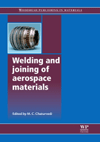
The KLADARC TriPulse
cladding machine features a dual-torch oscillation axis: one deposits a
two-layer alloy overlay on clad pipe; the other simultaneously provides a
molten “puddle” for longer residence time to bond. Photo courtesy Nook Industries
Inc.
The 21st century has presented a technological shift in oil field drilling. Most of the easily accessible oil has already been tapped, and well producers are forced to go deeper to procure “sour” crude oil. Containing hydrogen sulfide, sour crude oil is a sulfurous mixture that corrodes the iron in the carbon steel pipe that extracts the oil.
ARC Specialties Inc., a custom automated and robotic equipment manufacturer in Houston, has developed the KLADARC TriPulse hot-wire gas tungsten arc welding (GTAW) cladding machine, which controls this corrosion so oil can be processed and safely extracted from deepwater sour oil fields. Corrosion is mitigated by reducing oxide inclusions and iron dilution in the cladding process.
The machine features a dual-torch oscillation axis: one that deposits a two-layer alloy (CRA/Alloy 625) overlay on clad pipe up to 20 feet in length with inside diameters up to 30 inches, and one that simultaneously provides a molten “puddle” for longer residence time to bond. Overlay thickness is a nominal 3.5 millimeters, with a guaranteed minimum of 3 millimeters.
The oscillation axis is driven by precision-rolled ballscrews manufactured by Nook Industries Inc. The ballscrews are made of alloy, stainless steel, titanium and other exotic metals. They feature a double-bearing support that provides an efficient means of converting rotary motion to linear motion on the oscillation axis. ARC customized the screws to meet its unique application specifications.
“Oscillation welding really sets apart our clad quality from the traditional methods of cladding,” says Dan Allford, president of ARC Specialties. “The oscillation process is a harsh application since it runs and repeats without stopping for hours at a time. Therefore, the reliability and performance of the ballscrews are vital.”
The dual-torch oscillation process involves feeding CRA wire into a 20-foot-long torch that welds it circumferentially along the inner wall of the steel pipe that is steadily turned by motorized rollers. Ballscrews wiggle the torch back and forth approximately 1 ips to create the weld. After one half of a pipe’s inside diameter is completely welded, the torch is rotated 180 degrees so it can weld the other half.
Each oscillation places a heavy load on the ballscrew, with the 20-foot torch decelerated, stopped and reversed 120 times per minute with loads running just under 1,000 pounds during acceleration. The accelerate-decelerate rate is 0.8 inch at nearly one hertz per second.
The oscillation process also moves the weld puddle side-by-side to generate approximately two times the weld yield. Additionally, the single-pass circumferential weld ensures that the CRA overlay is seamless and allows the pipe to undergo long-radius bending after the overlay process.
Currently, ARC has two GTAW systems active in the Gulf Coast region, with two more scheduled for delivery in 2010.
For more information on ballscrew assemblies, call 800-321-7800 or visit www.nookindustries.com. For more information on weld overlays, call 713-631-7575 or visit www.arcspecialties.com.






